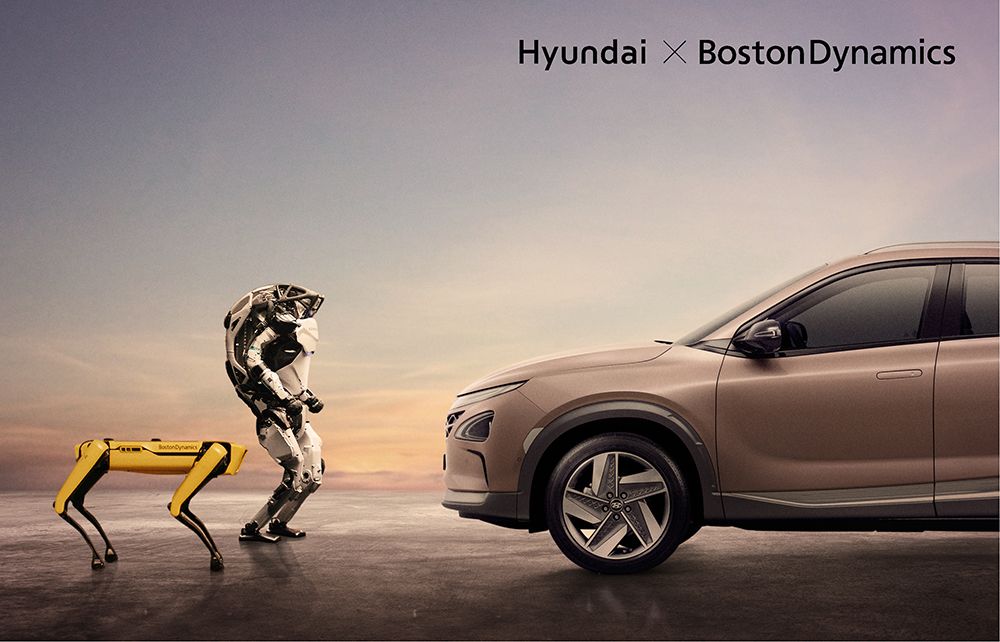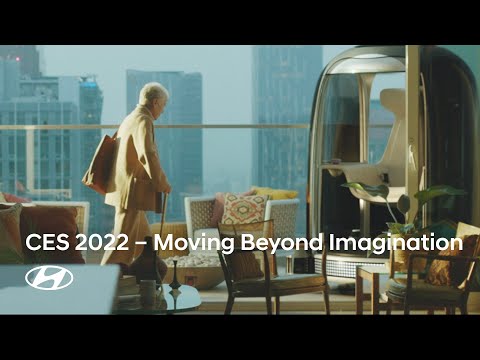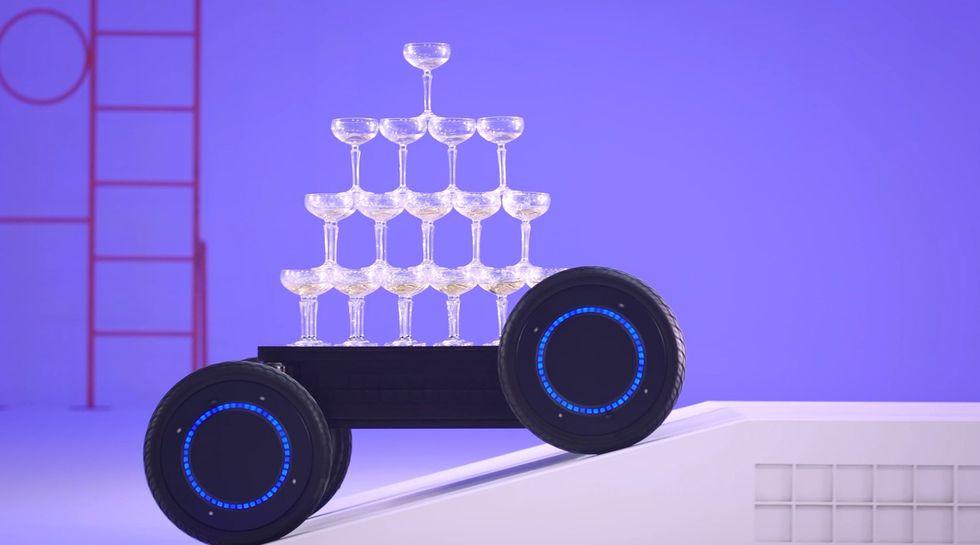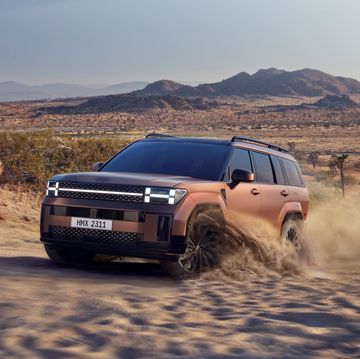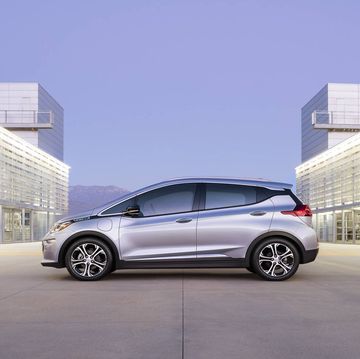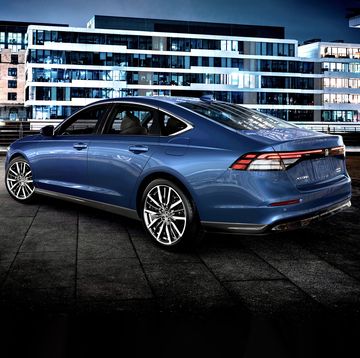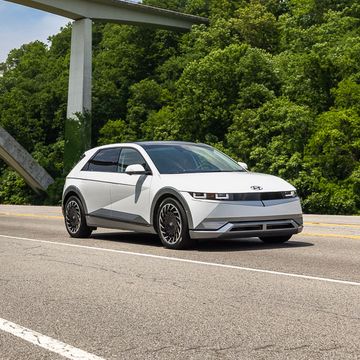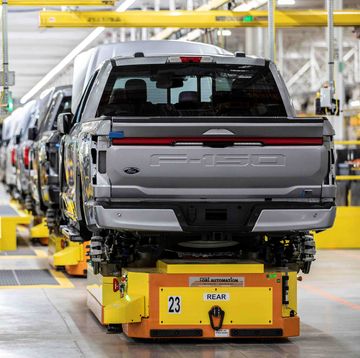- Last year, Hyundai bought Boston Dynamics. This year at CES it was kicking around ideas about what to do with all those robots.
- Hyundai says it has several ideas about how to introduce this advanced robotic technology into a wide variety of mobility systems, into cars and urban air mobility vehicles, maybe even into machines for direct human mobility.
- The coolest ideas involved a type of exoskeleton that could help disabled people.
Less than a year ago, drunk with cash from all those Tucson and Santa Fe sales, Hyundai Motor Group bought Boston Dynamics for $1.1 billion (or $921 million, depending on your source). It was probably better than buying Aston Martin or Fiat, but the question of what to do with all those spindly-legged bots has loomed large ever since. What are you going to do, teach a robot dog to drive a Sonata?
You’ve probably seen Boston Dynamics robots on YouTube. Some look like machine-learning pit bulls, some like large, barrel-chested men without heads. In some of those videos, mean-spirited engineers poke the robot men with sticks, trying to knock them over, but the robot men stagger back up every time. (One day one of those robots is going to have enough of getting poked with the sticks and swat back at one of those engineers. I’ve seen it happen on the SyFy channel and it never ends well, especially for the humans.)
Regardless, this year at CES the Hyundai booth didn’t have any cars in it at all, just robots. (Last year it had that big helicopter. No word on whatever happened to that thing.) Hyundai might not have fully figured out what to do with all its new robots but had already paid for the CES floorspace so it slapped up a theme for West Hall No. 5818 of the Las Vegas Convention Center titled “Expanding Human Reach.” That title might have been about as meaningful as a prom theme like “Under the Sea” or “Among the Stars” or whatever your prom theme was. Did it mean anything? Who cares? We have a big budget and we’re buying bots!
Then Euisun Chung, executive chair of Hyundai Motor Group, waxed sentimental before the show about how he loved R2-D2 when he was a kid and tried to bring the theme home.
“The company’s robotics business will drive the paradigm shift toward future mobility, going beyond the traditional means of transportation to fulfill unlimited freedom of movement for mankind,” he said.
Still kind of broad.
“We are completely rethinking mobility,” Chung specified. “We are expanding the entire universe of mobility. Robotics will create a horizontal connection across all of our business areas. Currently the metaverse is seen as a gaming platform, but Hyundai thinks the possibilities of the metaverse are infinite. Our mobility solutions will be expanded into what we call metamobility. Our robots exist to expand the human range.”
Turns out, after all the rhetoric, Hyundai has some specific plans, from companion robots that collaborate with humans to powerful exoskeletons that will create superhumans.
“Hyundai and Boston Dynamics both envision a future in which people and machines work together in order to improve safety and people, improve productivity, and broadly improve the quality of life,” said Marc Raibert, chairman and founder of Boston Dynamics. “Right now we have two Spot robots (the dogs) at Chernobyl that can be used to map the level of radiation without having people go into those spaces at all. We are also working with JPL (NASA’s Jet Propulsion Laboratory) with our robots.”
But that’s not all.
“We plan to introduce this advanced robotic technology into a wide variety of mobility systems: into cars and into urban air mobility vehicles, and maybe even into machines for direct human mobility, wearable robots, human exoskeletons that work very closely with the human, robots that perform repetitive tasks that are rough on the body, or we can make a superhuman person that can lift loads a normal person could not, maybe even help disabled people, giving them mobility and freedom beyond what they can do on their own.”
One application Hyundai showed at CES was called Plug & Drive, or PnD modular platform. The PnD looks like a combination of a wheelchair and a phone booth, which also sometimes acts as an elevator going up and down the outside of a building. A video shows an elderly person who uses the PnD to get down to street level of her building, along the street like a car, then gloms onto a sort of bus-like vehicle to travel even farther.
Another idea under development is combining what Hyundai calls a Mobile Eccentric Droid (MobED) small mobility platform and a Drive & Lift module. Hyundai calls that “an all-in-one robotics solution based on an eccentric wheel mechanism that combines the drive, steering, and braking systems all into one structure.” The Drive & Lift modules stabilize a platform while the MobED traverses uneven terrain.
Then Hyundai’s wearable robots, the Vest Exoskeleton (VEX) and Chairless Exoskeleton (CEX), as well as Boston Dynamics’ quadruped Spot, are supporting industrial work and hold promise for other applications, even search-and-rescue missions, Hyundai said.
“We see a future where robots become more than just task-oriented tools, more than just machines,” Raibert said. “We believe in a future where robots become useful, trusted companions in our everyday lives.”
In addition to maybe allowing paraplegics to walk again, those exoskeletons sound like they could be fun.
Will it all work? Someday. Given enough time and research money, anything can work.
Still, what did happen to last year’s helicopter drones?
Share your thoughts on how robot technology will help with future mobility issues—or maybe just about how much you enjoy Boston Dynamics’ videos—in the comments below.

